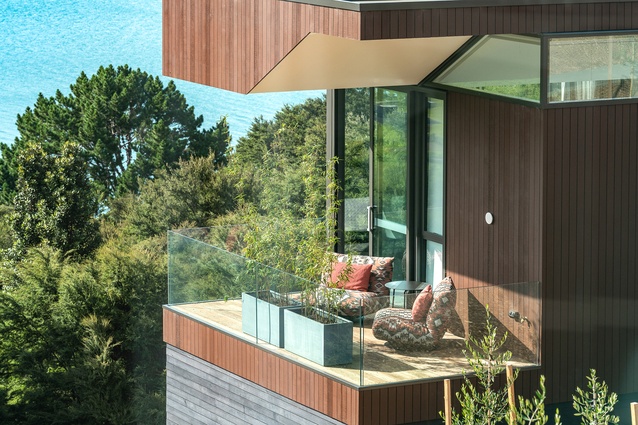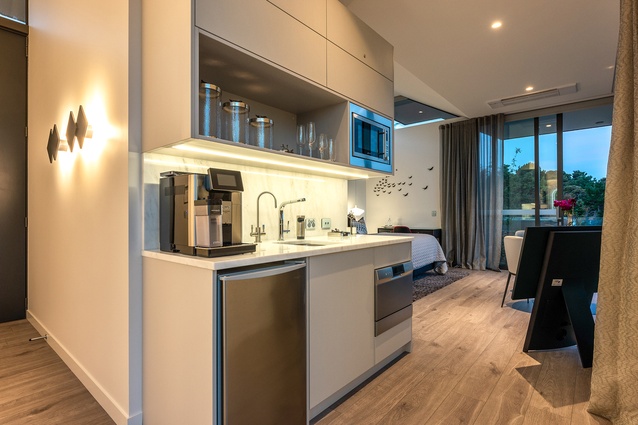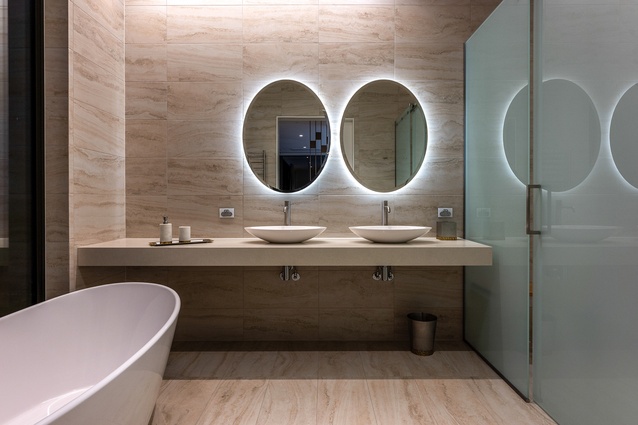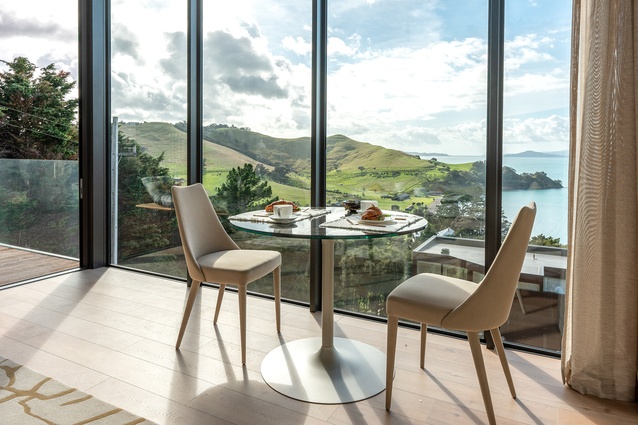Luxury villas demonstrate a greener way on Waiheke Island
In designing four luxury villas on Waiheke Island's southern slopes for Omana Luxury Villa, Pete Bossley of Bossley Architects went to great lengths to ensure the project met the highest standards of ecological sustainability, with no detail overlooked.
Inspired by the sloping landform on which they sit, the four accommodation suites are spread across the hillside in four separate buildings (Villa Surrender, Villa Joy, Villa Serenity and Villa Haven), with each villa offering guests a unique experience of the landscape and the surrounding views.
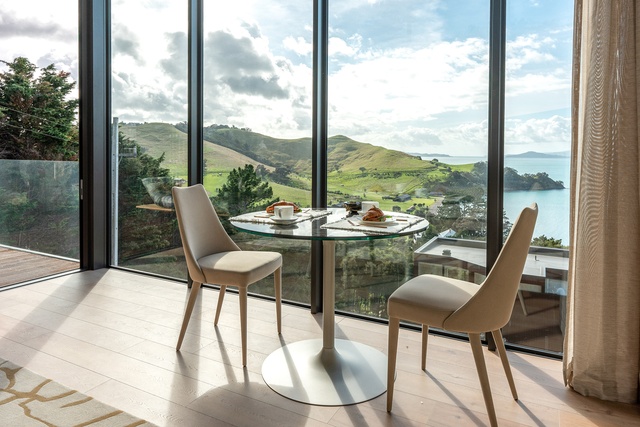
Inside, over-sized glass walls and doors provide an unbroken view of the sea and woodland from within, while a neutral palette and furniture hailing from Italy, Germany and Spain — alongside made-in-New-Zealand furnishings all purchased from New Zealand furniture supplier Sarsfield Brooke — offers a sense of worldliness and sophisticated luxury.
Each of the buildings integrates within the hillside and, when viewed from across the bay or from the sea, the reduced mass of four separate entities presents a less-solid object on the landscape than one large building. And, as the planting grows around and between the suites, this integration with the landscape will be further enhanced.
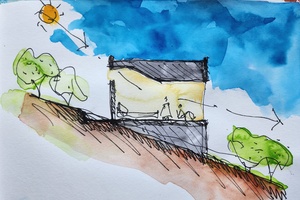
Each villa has an intriguing cross-section: outwardly they appear as clear cubic forms but the interior offers a surprise. Under the flat roofs, the ceilings start flat over the living area, then slope up towards the north to invite the sun to enter from a high level. This shape is then extruded to continue outside the ends of each building, providing covered terraces for each suite and giving them their unique character.
Bossley’s clients Cobus and Silmara Scholtz wanted a design for the villas that had long-term ecological sustainability in mind – not only an important principle for the initial build and material choices but also something to be considered in the ongoing operation and maintenance of the villas.
Environmentally friendly design principles and elements include double glazing, timber cladding, insulated warm roof construction, above-standard insulation, natural cross-ventilation, heat pumps and rainwater retention. And, wherever possible, materials were selected for their green ratings. Plentiful natural light minimises reliance on artificial lighting.

Thinking about the villas’ function as short-stay accommodation, design solutions were found to minimise the long-term carbon footprint of the villas, such as an on-site human waste treatment facility, installation of solar panels, battery storage and an electric car charging station (with the excess feeding back into the electricity network), easy-clean and durable surfaces, and a design that minimises the use of single-use plastics, wherever possible.
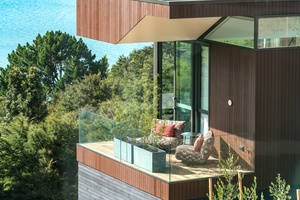
In addition to the focus on low-impact and sustainable architecture, the surrounding landscape of the site and its proximity to a nature reserve were important to co-owner Silmara Scholtz, who initiated a pest-control and weed-control plan and native plant regeneration programme for the site.
Scholtz’s efforts have proved worthwhile, as evidenced by the increased bird life in the area to create a more friendly, flourishing habitat for wildlife. In addition to existing sea views, the planting scheme promises glimpses of local wildlife by creating green corridors connecting to areas of native bush.
The villas serve as a reminder that luxury doesn’t have to “cost the earth” and that there are potential clients out there that understand the need to build smarter and better for the planet.
Learn more about Bossley Architects here.
Omana Luxury Villa is a privately owned business located on Waiheke Island. For more information or to book a stay, head to their website.

